Detailed introduction of the University of Tartu:
Introduction and Overview
Geographical location: Located in Tartu, Estonia, the city is known as the "student capital" of Estonia. The city has a well-developed public transportation system, and there are airports and train stations outside the suburbs, making transportation very convenient.
Student size: There are nearly 14,300 students, of which more than 1,800 are foreign students.
Language of instruction: The language of instruction for most courses is Estonian, and there are also 30 master's programs taught in English.
History
Establishment time: The school was founded in 1632 by King Gustav II of Sweden. It was then called Gustav College. It was the second university in the history of the Kingdom of Sweden after Ufa Sara University. Harvard University was also founded in the same year.
Important development stage: After Estonia gained independence in 1919, Gustav College was renamed the University of Tartu, and gradually developed into the largest and most prestigious national university in Estonia, respected as "The Enlightenment Madonna of Estonia".
School Strength
Faculty: There are 3,500 faculty members, including 1,200 professors and senior researchers. The president is Professor Alar Karis, the academic adviser to the president. The school has trained many outstanding talents, such as 9 of the 14 ministers of the current Estonian government cabinet and Rait Maruste, the highest judge of the European Court of Justice, who graduated from the school. In addition, Professor Wilhelm Friedrich Ostwald, the founder of physical chemistry at the University of Tartu, won the Nobel Prize in Physical Chemistry.
Subjects and majors: There are 11 subjects including theology, law, medicine, philosophy, biology and geography, physics and chemistry, education, sports, business management, mathematics and information science, sociology, etc., with 10 departments and institutes, covering undergraduate, master and doctoral courses at different levels, including 56 undergraduate courses, 68 master courses and 33 doctoral courses, and 26 courses taught in English Its polymer and clinical medicine are rated as the best research institutes in Europe by the European Union.
Academic exchanges: The University of Tartu is a member of the famous Coimbra Group in Europe. In the EU Erasmus exchange program, it has established cooperation with more than 200 universities in 26 countries and actively cooperates with 60 universities around the world. It has established inter-school cooperation with many countries, and has established exchange and cooperation projects with Tsinghua University, Tongji University, Hong Kong Baptist University, Southeast University, Shanghai Jiaotong University, Shanghai University and other universities in China.
Institutional Nature
The largest national university in Estonia.
Educational Philosophy
As a national university in Estonia, the University of Tartu shoulders the responsibility of responding to social challenges, is committed to promoting the development of the knowledge economy, cultivating students' lifelong learning attitudes and future skills, ensuring the inheritance and continuation of Estonian intellectuals and the Estonian language and culture, and conducting education, research, technology and other innovative activities around the world through interdisciplinary cooperation.
Key laboratories and disciplines
Key laboratories: The University of Tartu has a number of advanced research laboratories and facilities, such as biological sample banks, observatories, etc., which provide strong support for scientific research.
Key disciplines: Clinical medicine, semiotics and other fields are in a leading position in the world, among which semiotics ranks first in the world, clinical medicine ranks among the top five in Europe, and the school ranks among the top 100 in Europe. , which designed the first Estonian satellite, also reflects the school's strong strength in related disciplines.
Faculty
The school has four main faculties, namely the Faculty of Arts and Humanities, the Faculty of Social Sciences, the Faculty of Medicine, and the Faculty of Science and Technology.
Ranking
In the "2025 Times Higher Education World University Rankings" released in June 2024, the University of Tartu ranked 301-350.
In the "2024 QS World University Rankings" released in 2024, the University of Tartu ranked 358 =.
Expenses
Undergraduate courses: All undergraduate courses are fee-based, and the specific tuition fees vary depending on the major.
Master's courses: Most international master's courses are fee-based, but some courses offer places for students with tuition reductions. As long as the rated learning load requirements are met, students do not have to pay tuition.
Doctoral courses: In Estonia, doctoral studies are free, and doctoral student places are mainly provided by state-funded junior researcher positions, that is, doctoral students are both students and university employees.
Campus
Campus facilities: The historical buildings of the University of Tartu are included in the European Cultural Heritage List. The campus also has a hospital, sports center, youth college, museum, botanical garden, biological sample bank, observatory and library with more than four million books, etc., which provide good conditions for students' study, life and research.
Campus life: The main population of Tartu is composed of college students. The city is vibrant and safe. Various student/citizen activities are held every month, such as national bicycle competitions, house-building competitions, national long-distance running competitions, large-scale student concerts, music festivals, etc., providing students with a rich extracurricular life.
-
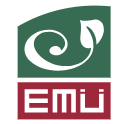
Estonian University of Life Sciences
-

Tallinn University of Technology
-
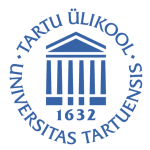
University of Tartu
-
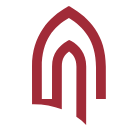
Tallinn University
-

Estonian School of Diplomacy
-

Estonian Business School
-
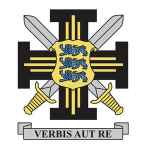
Estonian Academy of Security Sciences
-

Estonian Academy of Arts
-
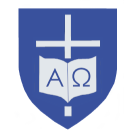
Institute of Theology of the EELC
-
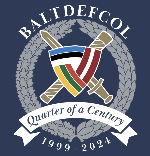
Baltic Defence College
-

Mesoamerican University
-

Istmo University
-

Mariano Galvez University of Guatemala
-

Regional University of Guatemala
-

Galileo University
-

Francisco Marroquín University
-

Rafael Landívar University
-

University of the Valley of Guatemala
-

University of San Carlos of Guatemala
-

Technological Institute of Tlaxcala Plateau
-

Golfo University
-

Technological University of South Sonora
-

Technological University of Huejotzingo
-

Tizimín Institute of Technology
-

Chilpancingo Institute of Technology
